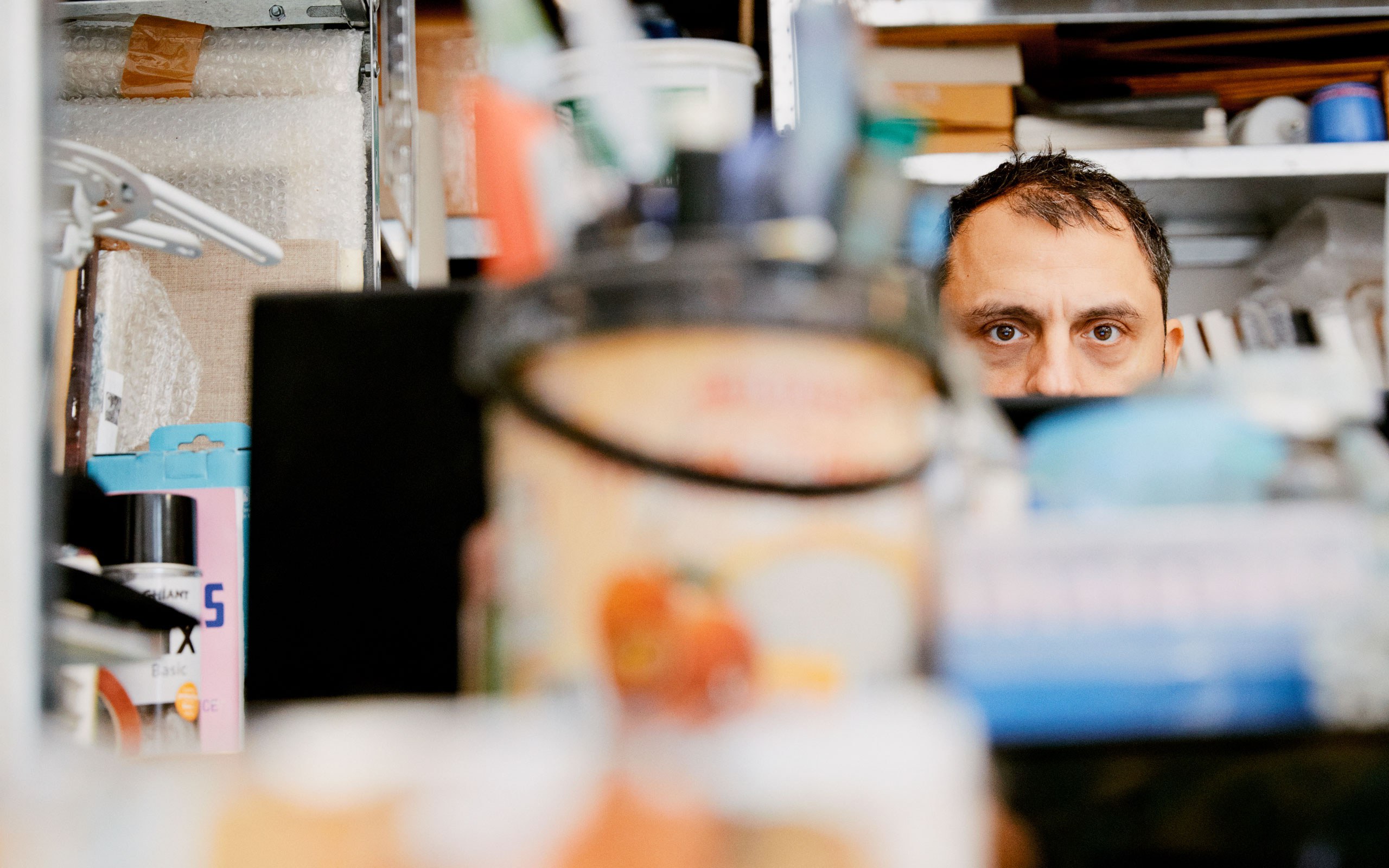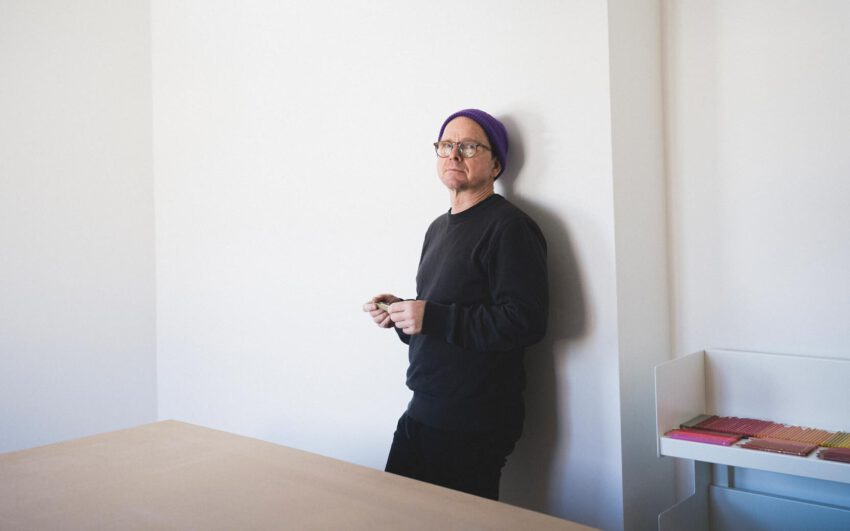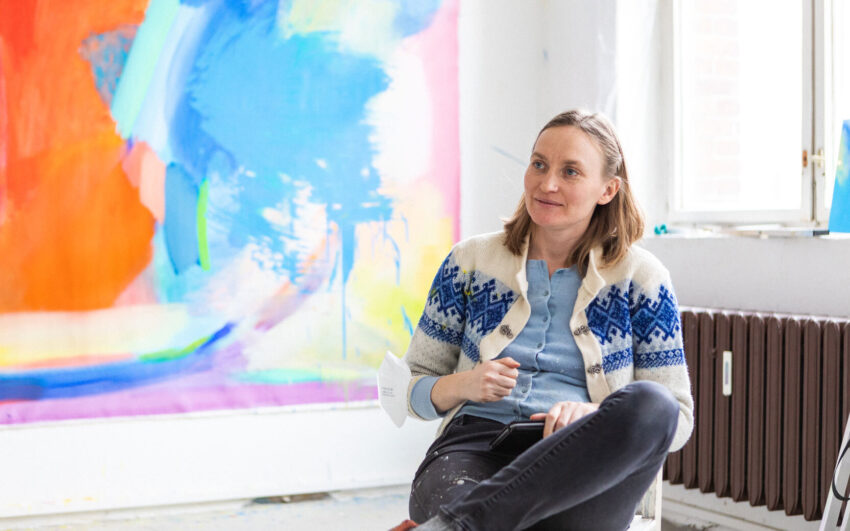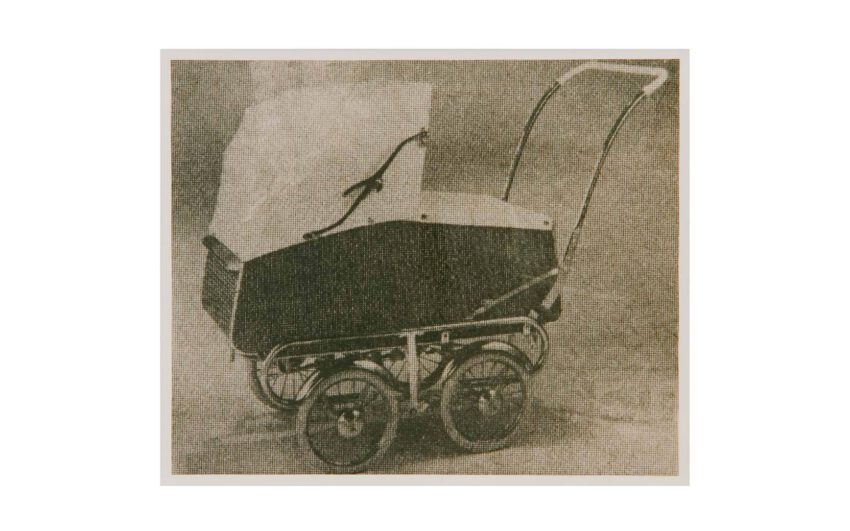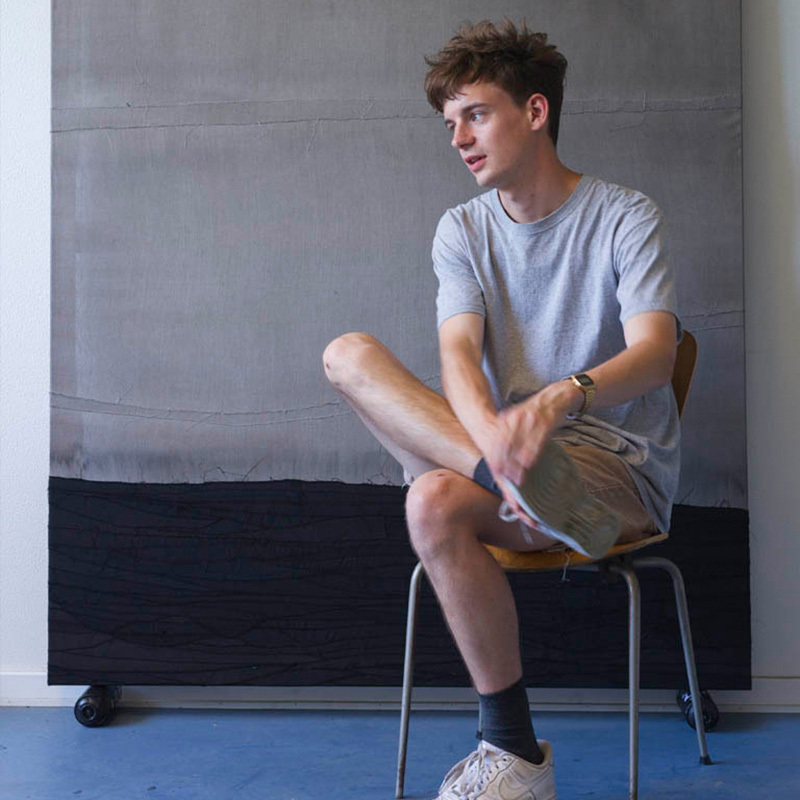Air-brushed horizons, sculptural canvases, blurred visual worlds, and scraped off layers of paint: The Greek artist Yorgos Stamkopoulos is a painter who works rather like a sculptor and delights in playing with chance. His works are comprised of abstract forms, color fields, and lines that seem to have no beginning or end. The creation process involves the use of a casting material which covers the canvas with a kind of skin, layers of paint are then added, which the Berlin-based artist eventually removes, resulting in his melancholic paintings.
Yorgos, did art already play a role in your youth in Greece?
It did. I was born and raised in the small town of Katerini in northern Greece half an hour away from Thessaloniki. There was barely any access to art and culture: no museums, galleries, or artists. As a creative person I had to invent everything for myself; I was already very creative as a child and painted on the walls of my room.
So, you just painted them yourself as a child?
Exactly. Twice a year I was able to repaint everything and draw all over it, then my father gave the walls a fresh coat of paint and I started all over again. I saw reproductions of Rothko’s paintings for the first time in my father’s house. In the summer, I was allowed to accompany him in his work. He wanted me to understand what he was doing in his job. In one of the houses, I helped him to paint colorful squares on the walls. When I went to the art academy many years later and saw an original Rothko there for the first time, I remembered this scene. My father had a formative influence on my art, even though he had no idea about art. It was all intuitive.
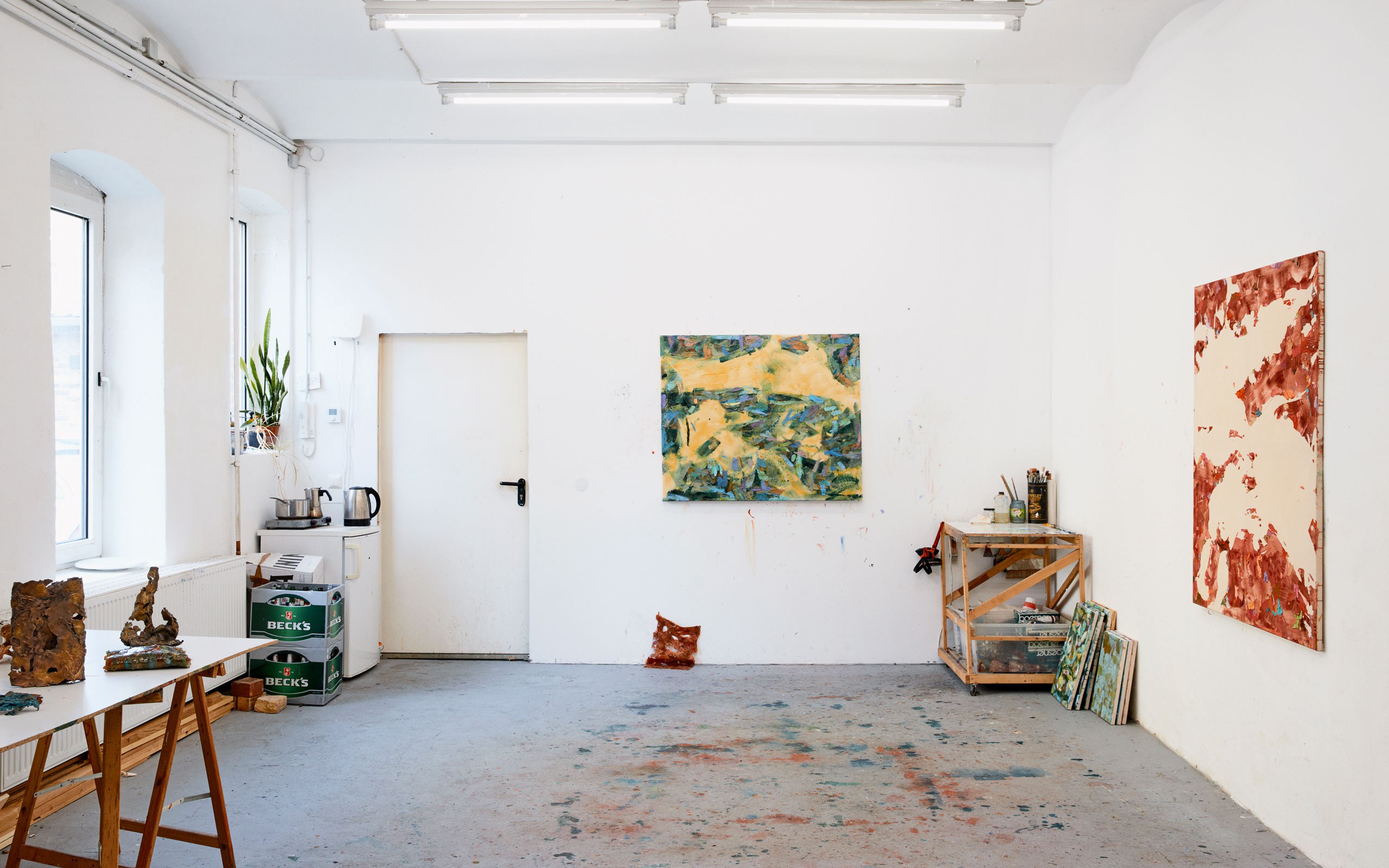
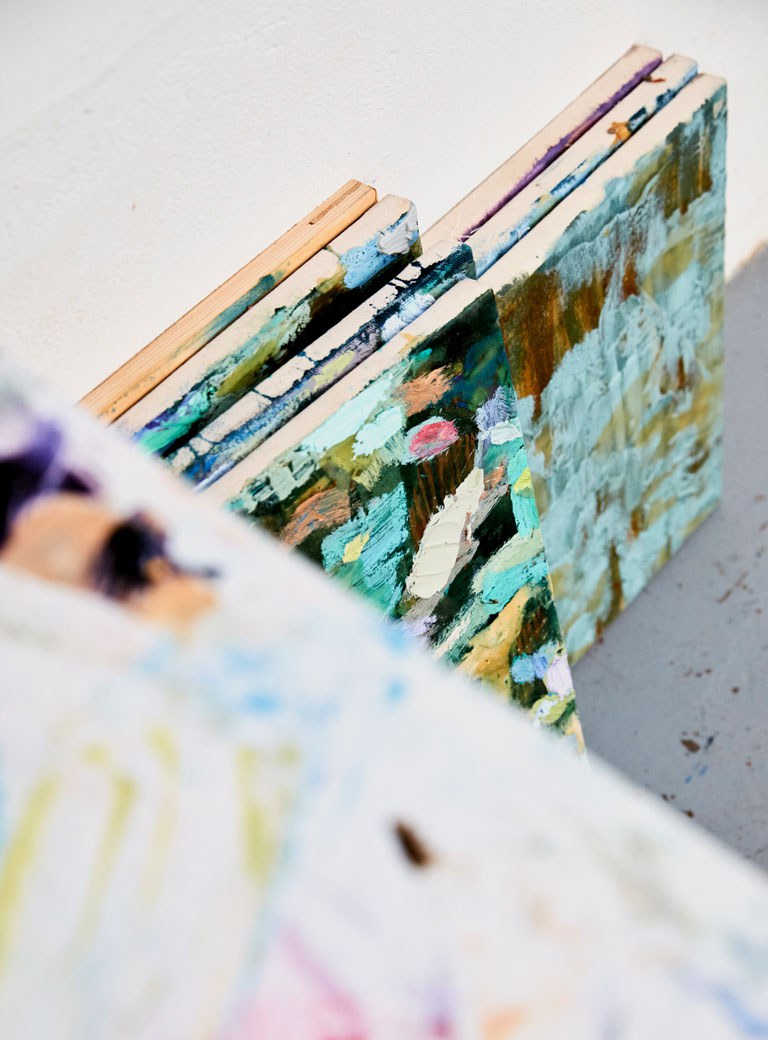
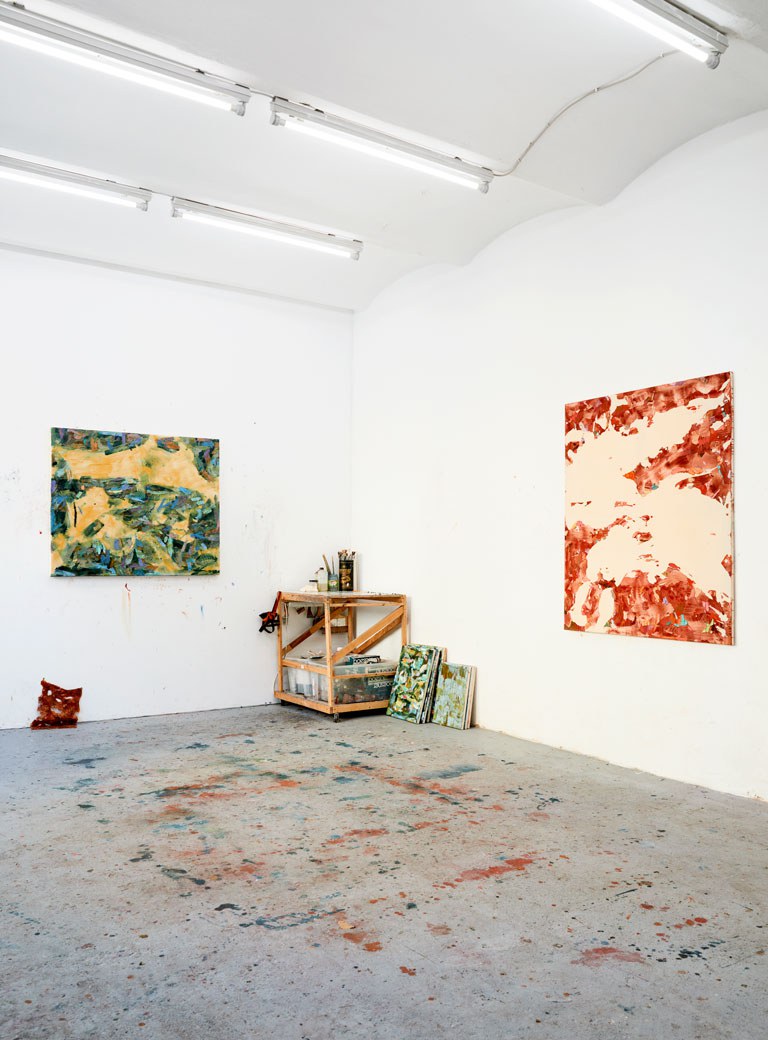
Why did you choose to study art?
I was a very poor student at school. Mathematics, philosophy, and ancient Greek were not my thing. So, I was always drawing or painting. Shortly before I finished school, it occurred to me that this might be what I wanted to spend my life doing. My parents were very supportive of my passion and advised me to take lessons to see where it could take me. A year later, I applied to the art academies in Athens and Thessaloniki. It took three attempts before I was accepted. That had been a really difficult time for me. At first, I thought I wasn’t good enough. Before I went to the art academy, I had done a lot of graffiti.
Was there a crew you did street art with?
Yes, with school friends. It was super cool. Street art was completely new and still unknown in Greece at the time. We began spraying, placing our tags. It was exciting and gave us a special feeling of freedom. But I was really bad, and I haven’t gotten any better at street art to this day. My character was better suited to the art academy than to the street.
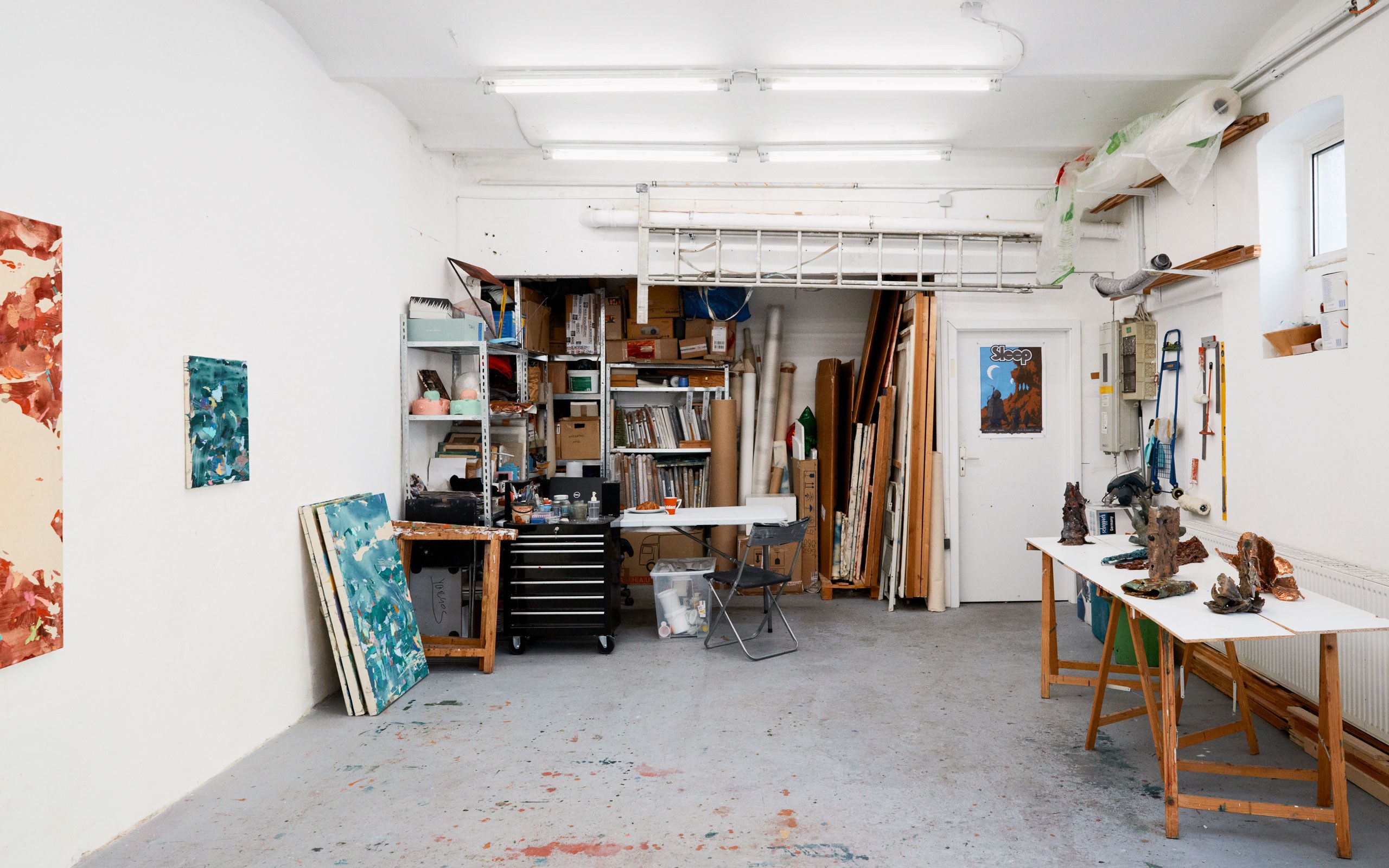
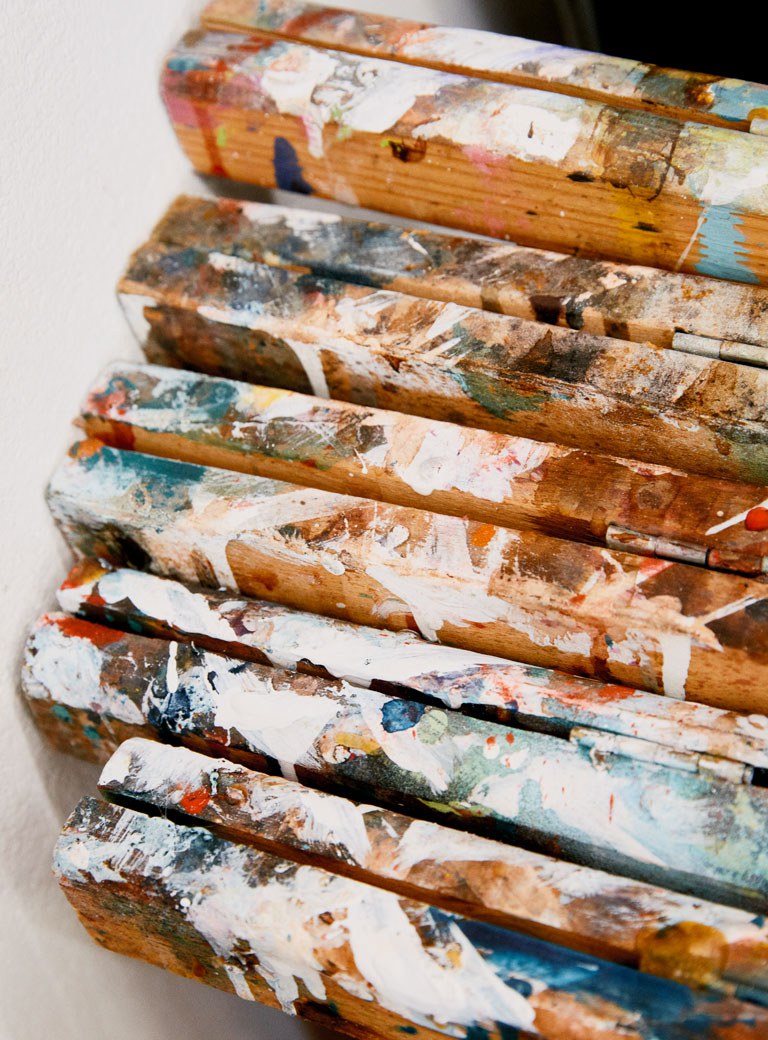
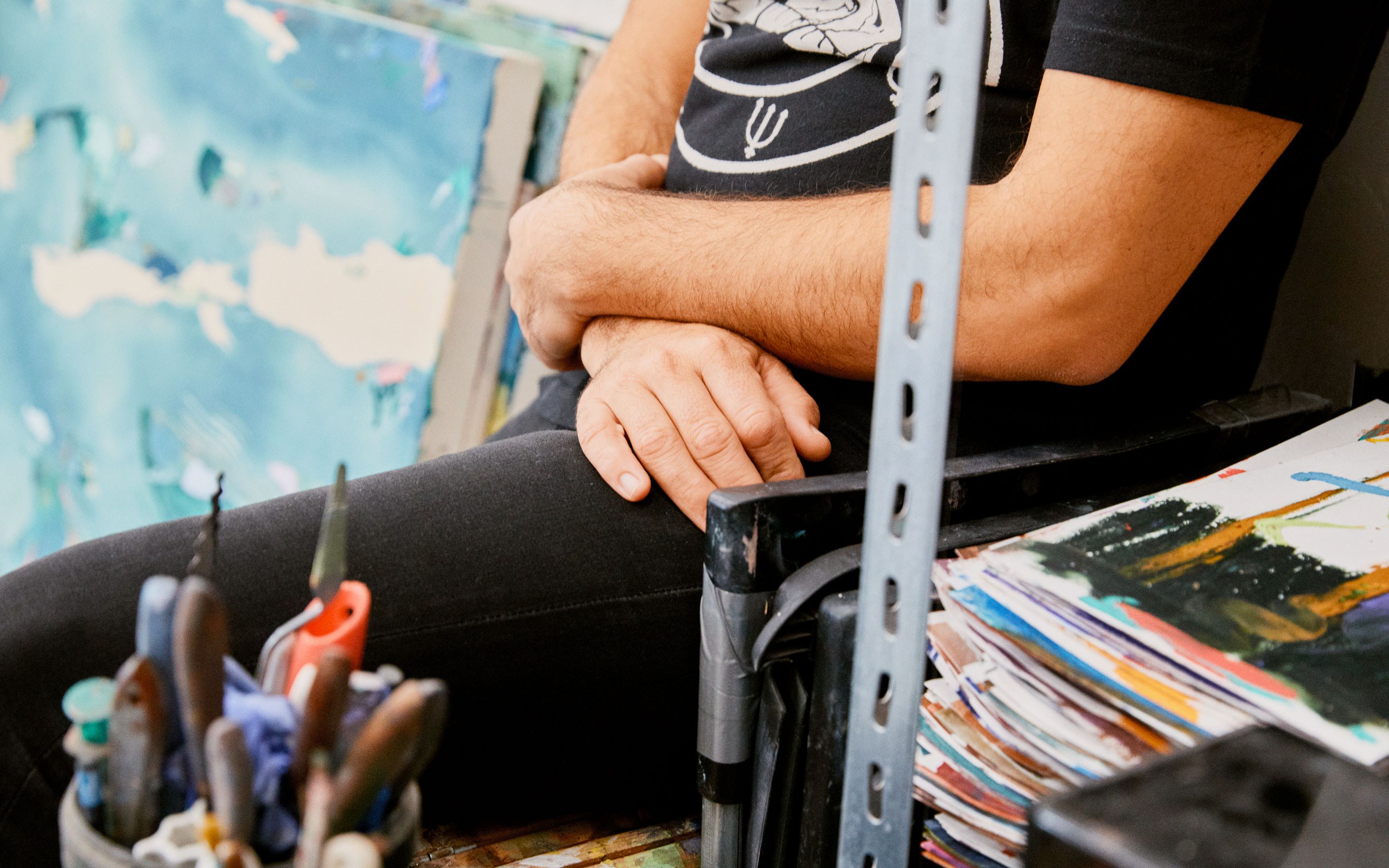
What were the inspiring moments at art school, especially at the beginning of your career?
The first two years were very academic. We painted and drew a lot, learned techniques – color, lines, dots. In the third year, we had more freedom, the professors allowed us to work freely. During this time, I began to experiment. At first, I mainly created collages, which I combined with painting superimposed on them. I deconstructed the collage, not knowing at the time that this technique would define me. When my professor saw the first samples of these works, he spoke to me directly, telling me that my work was interesting. He recommended artists for me to study – Jacques Villeglé, Mimmo Rotella, and John Heartfield, for example. I didn’t know these artists at the time, which is why I locked myself in art history libraries for weeks and read everything I could – the political situation at the time, the biographies of the artists, the social situations at the time.
What inspired you about them?
It was an incredibly formative phase for me. I was particularly overwhelmed by the classic process associated with collage, deconstruction, of tearing something down and reassembling it. I wanted to develop this further. Even back then, I was already using new techniques of deconstruction. In Berlin, I mainly sprayed pictures with an airbrush and deconstructed them by removal.
What inspired you to create your airbrushed works?
The Berlin techno scene provided a very strong inspiration. The sky spanning the city was gray. There was darkness and fog in the club.
And how have you perfected this technique?
At the time, I was just a student in Berlin. And I had a studio talk with my professor, during which I showed him some pictures. He told me he found them interesting, but that I should omit the figures, which I had included at the time. My early works were also very graphic and carefully composed. He recommended that I apply the same motifs with an airbrush. At first, I was puzzled and responded that I neither had the technical ability nor the money to buy such a piece of equipment. He then advised me to ask in the sculpture department because they had a compressor. I did that and subsequently developed and painted my first airbrushed work. It looked instantly right and accurate and made total sense. The entire texture, the application of paint, and the resulting picture content changed and took on a completely different expressiveness.
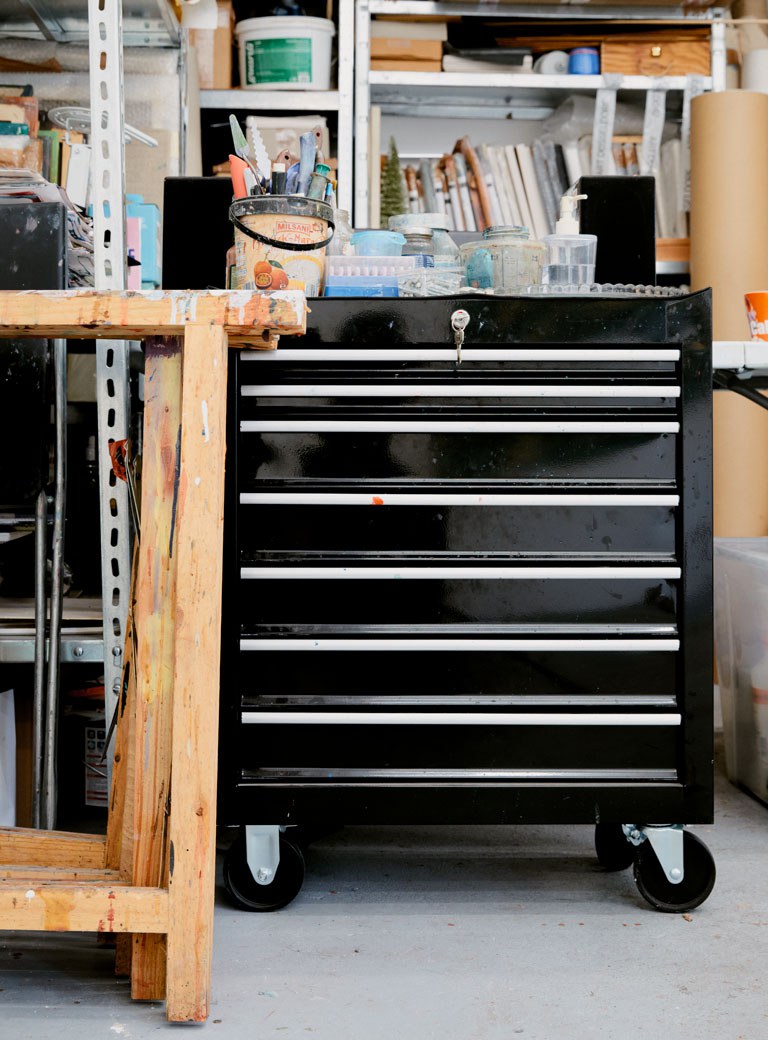
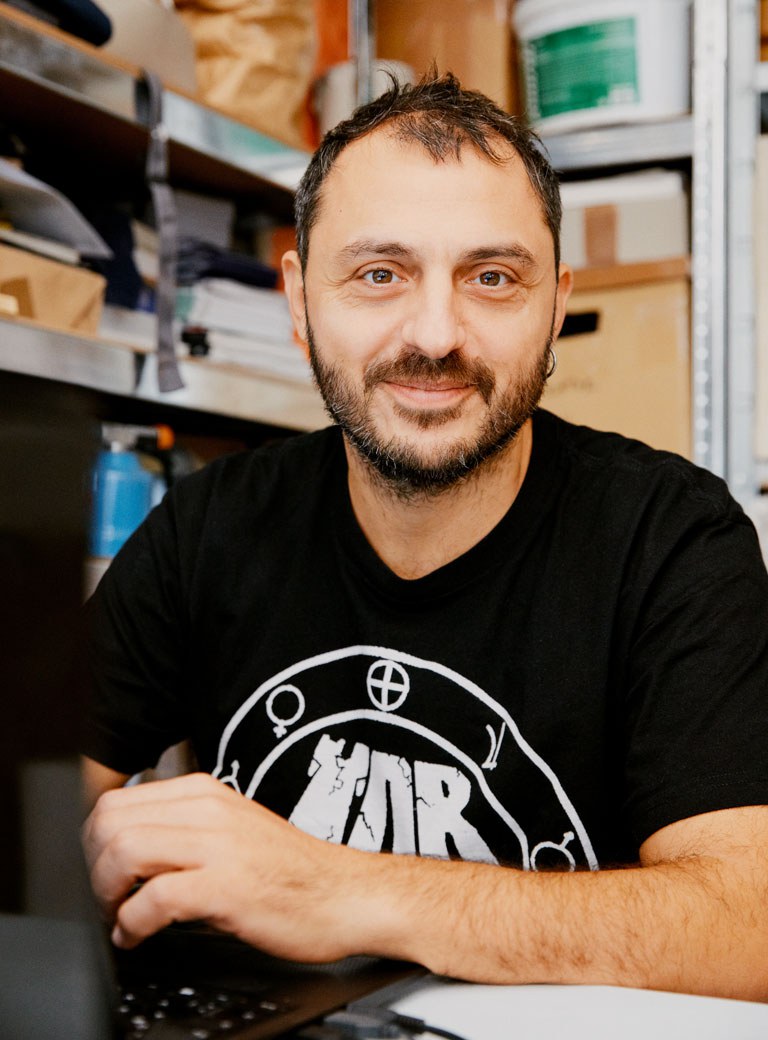
How did it go on from there?
I got increasingly closer to the technique. For me, it became both a tool and an experimental medium. However, this is also due to a very central characteristic of airbrushing: you have to maintain a certain distance between the canvas and the airbrush nozzle when applying the paint. With a paintbrush, the artistic energy is transferred directly to the painting via the tool. With the airbrush, there is an optimum between the tool and the canvas, which is usually between 15 and 20 centimeters. And that changed everything for me.
Does this distance play a role for you as an artistic concept?
It didn’t at the time. Today, I find it interesting to contemplate the technical aspects and reflect on the special artistic character of this tool and how it has also shaped me.
Is this also linked to your concept of deconstruction?
Yes, it is. For me, deconstruction is the most important element of my art. It defines my artistic identity. Art itself is to me, aways an act of deconstruction.
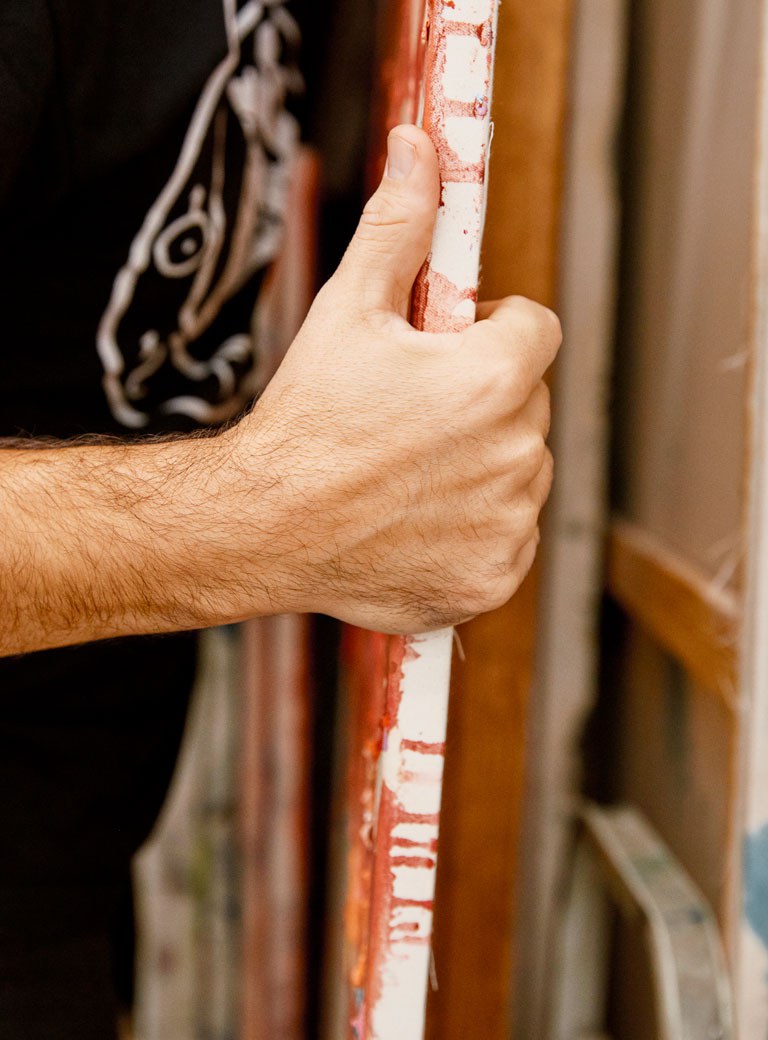
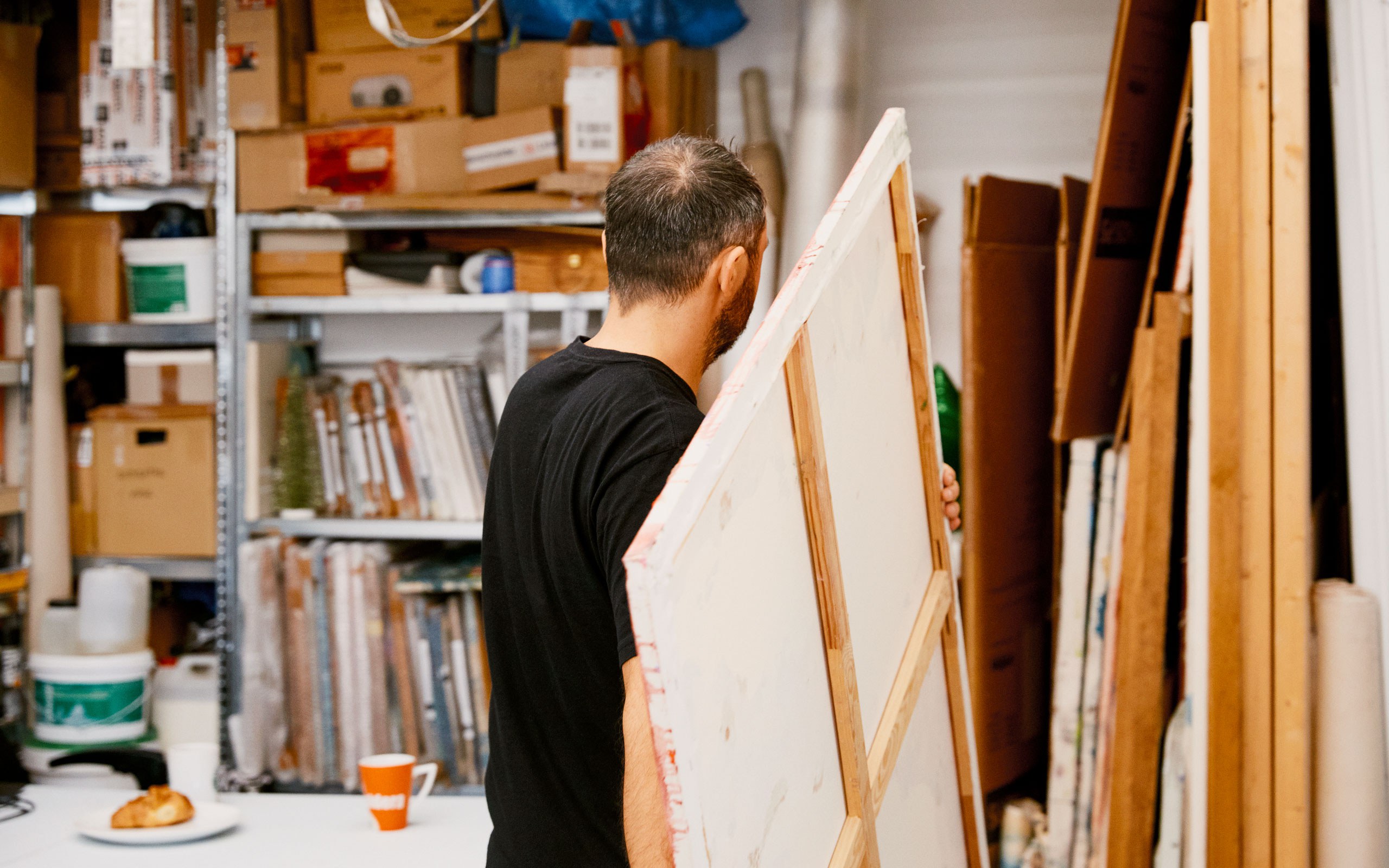
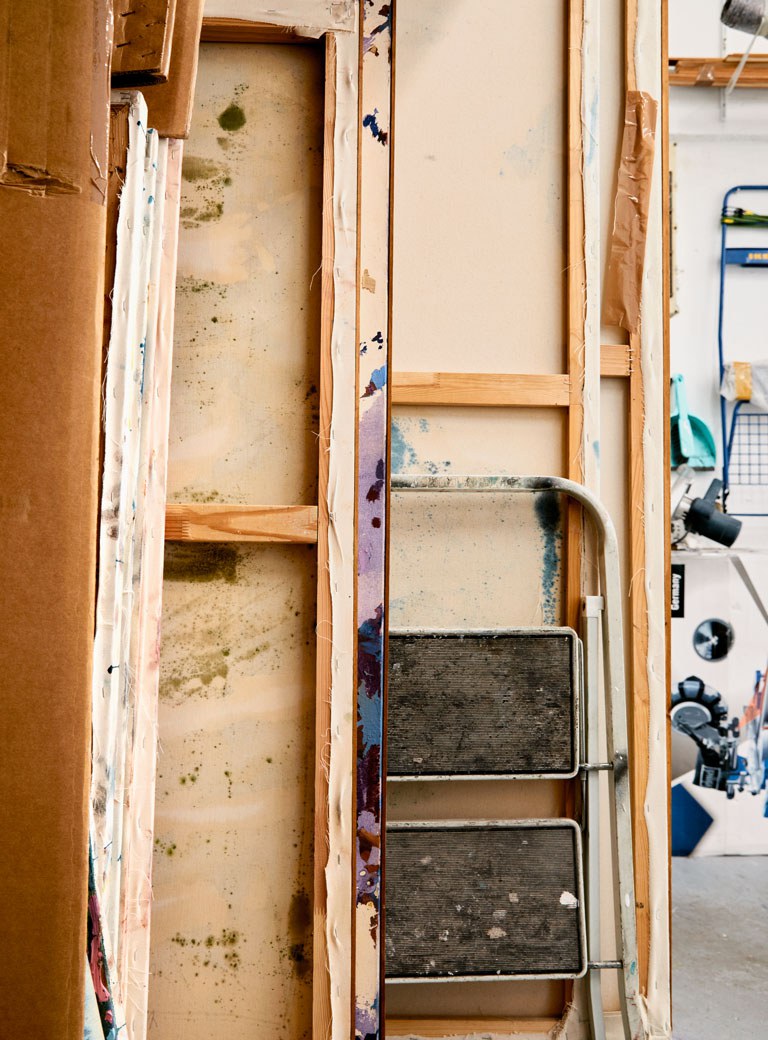
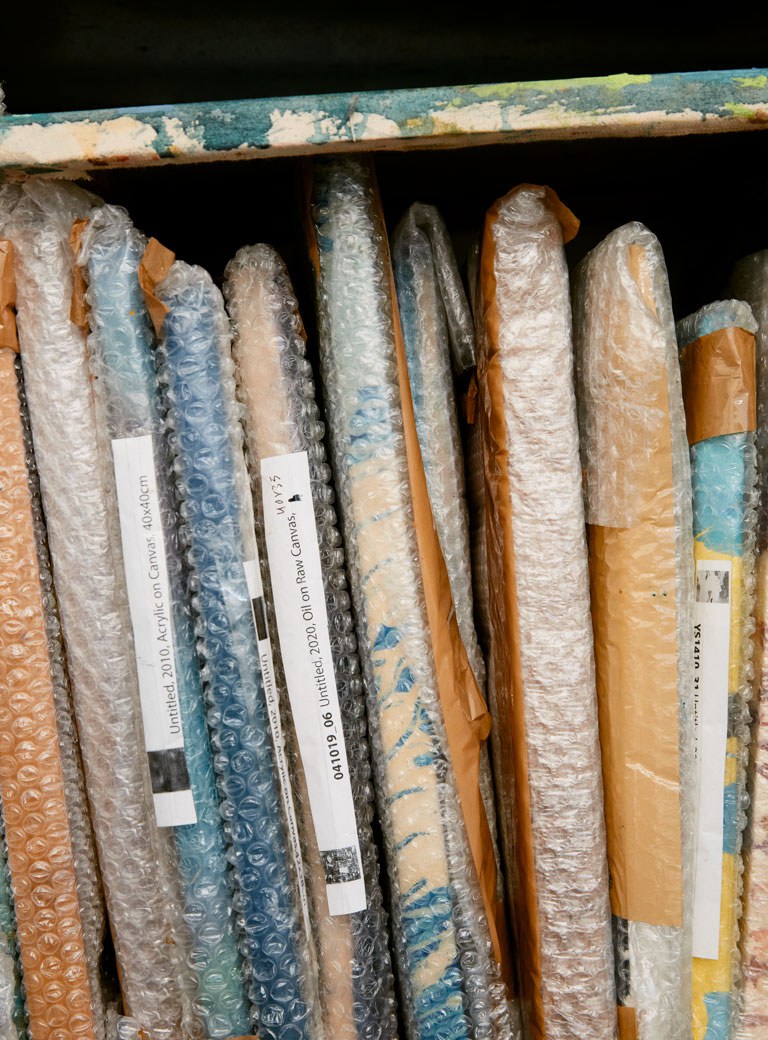
How did you get into sculpture?
I made my first sculpture in 2017, at an exhibition at the Galleria Mario Iannelli in Italy. I didn’t present any paintings there, but transformed the entire gallery into a huge, walk-in painting – in other words, I developed a spatial installation. Lines that I had sprayed with an airbrush were visible on my large-format paintings; however, I wanted to use sculptural elements to raise these lines into to the third dimension. I then molded by hand, multi-layered metal wires that floated and stood as free lines in space. I titled this project Trajectory, and it was the only work exhibited in the gallery. The viewers walked through the center of the work and became part of it. It was an immersive mixture of haptic and painted art.
Is there an exhibition that was formative for you?
Actually, almost every show has left its mark on me in some way. My first presentation in Italy was very special. The gallery owner wanted an exhibition where I could show my airbrushed horizons. However, it took over a year to arrange the exhibition during which my artistic language developed considerably. When I showed him my new ideas, he was surprised and amazed. At the time, I was just at the beginning of my career and worried that he would reject everything. But he said that we could include the new works in the show. That was a special feeling – for my artistic ideas to be taken seriously and to see them implemented in the show, a decision in which I was included. And as I said, Trajectory in Rome was gigantic in its dimensions.
How do you conceive your large-scale works and sculptures?
There is no general process for me. I don’t produce a drawing beforehand. I approach my work and the canvas very intuitively. To be quite candid, I never know how my works will ultimately appear. I would describe this approach as a “blind process.”
What does this mean in concrete terms?
I usually start quite abstractly by applying a masking agent to the canvas. This also reveals the connection to sculpture. In recent years, I have felt more like a sculptor than a painter. First, I paint gesturally on the canvas using the means a sculptor uses for molding. Then I let it dry and apply oil paint and repaint very large areas.
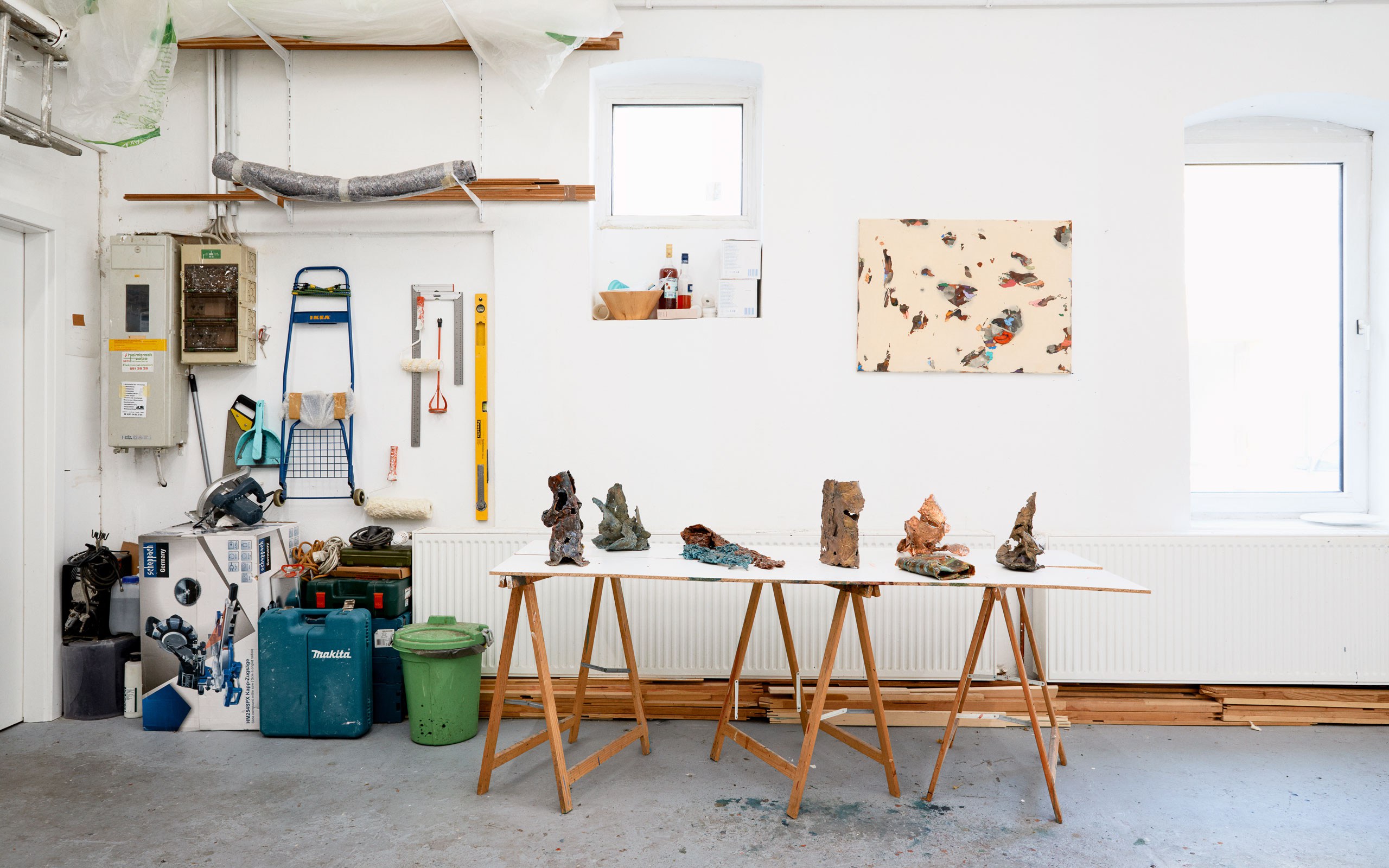
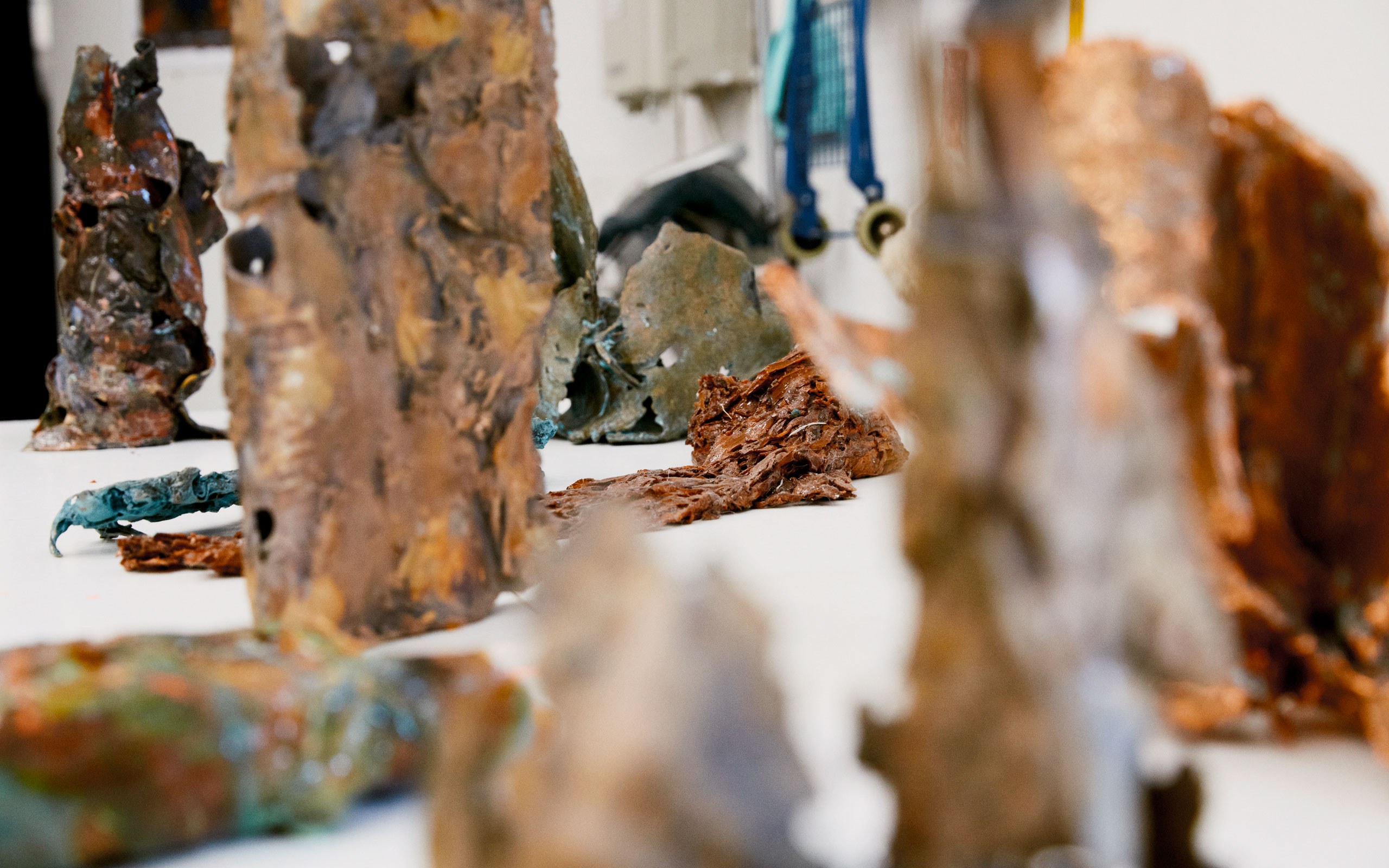
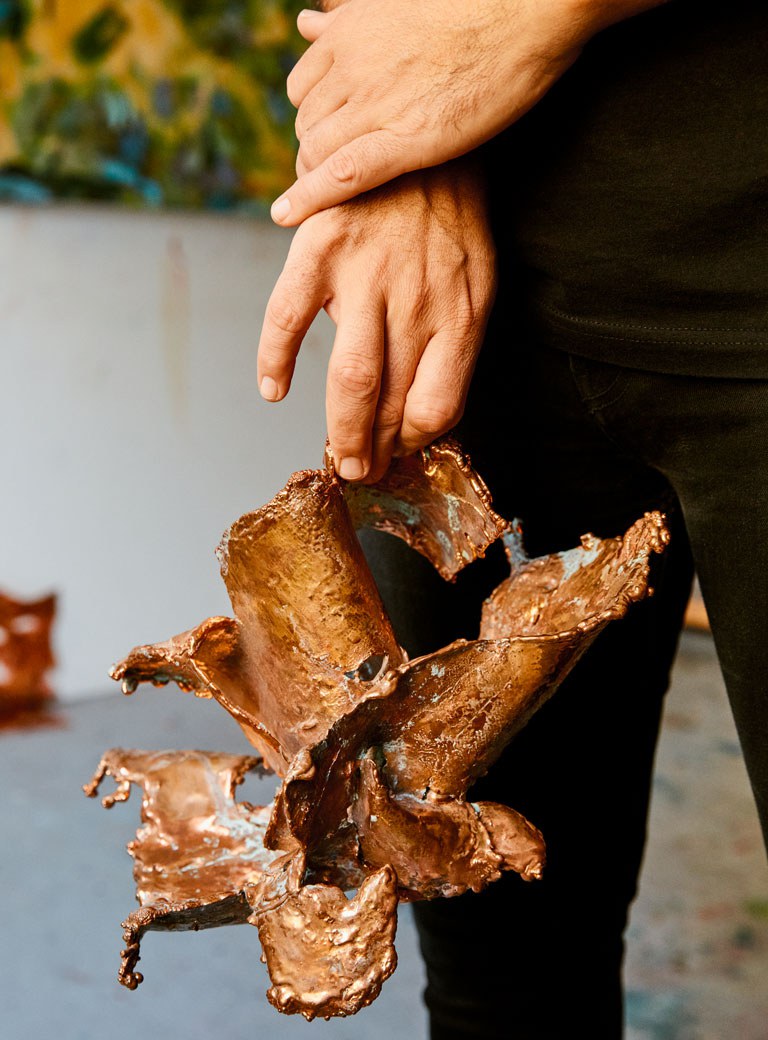
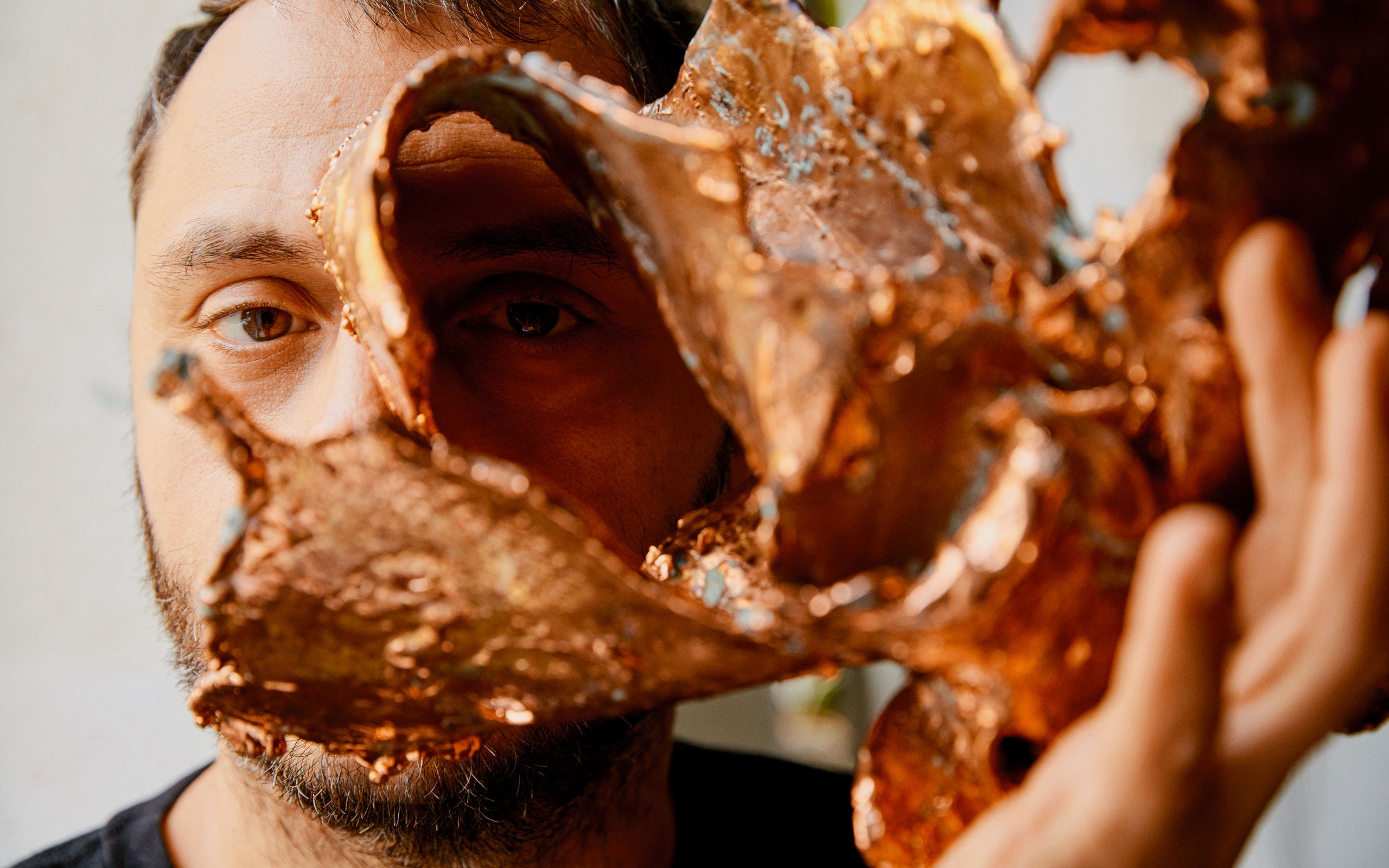
How do you proceed subsequently?
After I’ve allowed it to dry, I paint the canvas alternately with a masking agent and with oil paints. It is a multilayered process. I don’t know how the shapes will evolve, how verticals are created, or which areas of the canvas will be without paint. I only know one thing – when there is no longer an open area on the canvas without paint, then I scrape the paint off again and work on my works sculpturally, like a sculptor who removes the layers from the many levels of the painting, just like a sculptor. It’s the same principle as molding: The canvases become sculptures for me.
And that happens intuitively?
Yes, which is why I never know how my pictures will turn out in the end. I call this principle “unmasking.” When I unmask a picture, if I don’t like the composition, the colors, or the layers, not to change it would contradict my artistic principles; I must create a completely new picture.
Who and what inspires your creative process?
Music inspires me. It gives me a special balance and harmony, and this musical energy can also be felt in my paintings. I have many artistic role models. I like the paintings of Mark Rothko and the great works of Clyfford Still. There are many people and artists who inspire me. I also like many works that have no connection to my own work. They have to appeal to me emotionally and touch me. Then it's good.
Which style of music means the most to you?
I like very dark psychedelic rock and Doom Metal that has a lot of energy and gives me really good harmonies. YOB is a band that I really like. This style of music has a lot in common with my painting, and the way the sounds are created reminds me a lot of Greek theater – it builds up slowly – and at the end there is a catharsis. And that’s exactly how my artistic principle of unmasking works. I also really like the band Swans from the United States and they take a similar approach with their experimental no-wave rock. The purification always comes at the end. In the same way that my picture is intended to draw a conclusion at the end.
So, refinement is always part of your work?
Yes, because I always work with music. I put on one record a day and then paint to it.
Which record is it right now?
I’ll put something on later. Today the sun is shining, and the sky is blue. Today I want to hear something positive. Nothing melancholy. Nothing depressing.
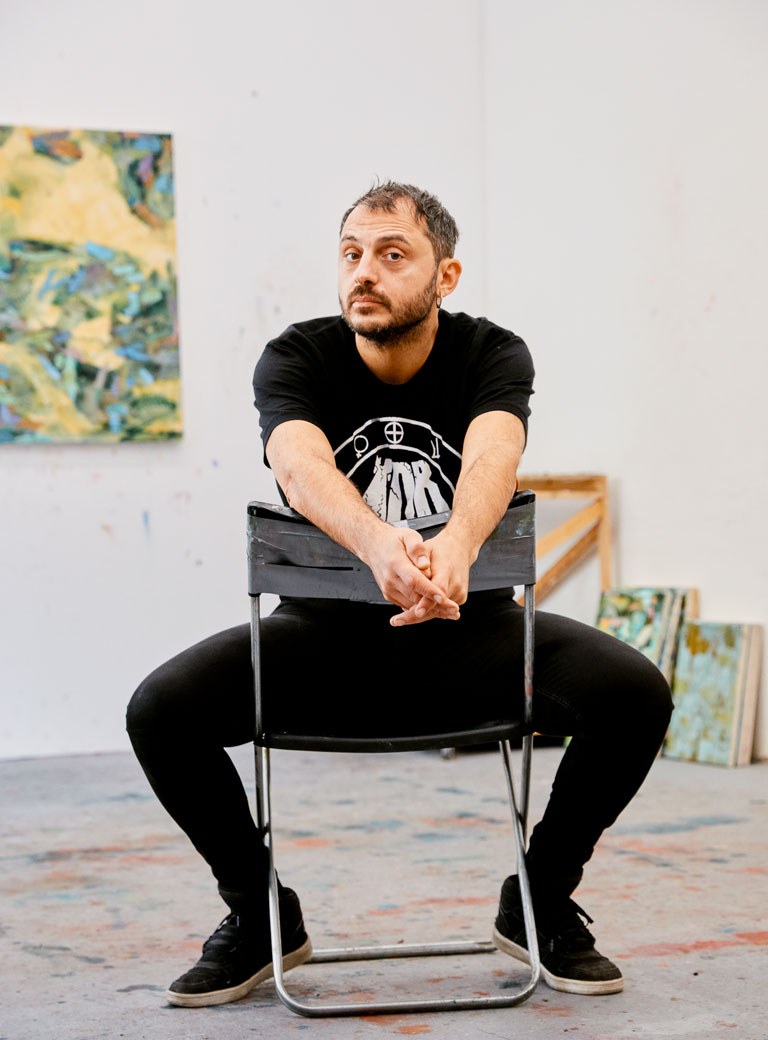
What was it like for you to come from Greece to gray Berlin, and what did that do to your art?
Yes, I needed time to get used to this city, its atmosphere, and its weather. But from the moment I decided to stay and work in Berlin, these questions disappeared. I just decided to go for it. I’m also very free-spirited. If I’m tired of the weather and the vibes, I just move on. It’s up to me and myself. And when I’ve decided on something, I try to see the good in it. There is always something special and beautiful even in this grayness. And I want to find it and recharge myself with this energy. That gives me creative strength.
What will be the next artistic step and what upcoming exhibitions are you planning?
A very good question, and one I ask myself too rarely At the moment, I just want to lock myself away in my studio and work. I have a lot of ideas in my head and have now been away for two months. I’m looking forward to the painting process again. I’m looking forward to getting back to it. I'm also working on an exhibition for Collectors Agenda, which will feature works by my colleague Ilari Hautamäki and myself and will showcase our current oeuvre, so to speak. And I’m very excited because I’ve just started developing bronze sculptures.
What are the bronze sculptures about and where will you have them made?
The bronze sculptures are to form a completely new series of works for me. I’m curious to see if these sculptures, which are currently being cast in Greece, will turn out well. I work with a very good foundry near Athens, where all the employees are fantastic craftsmen who know the material inside out and are very supportive. I’ve been there twice myself and particularly like the young master craftsman. He’s a third-generation caster and knows exactly what I’m aiming for with my ideas and implements them well. He is also excited at this time because initially, he wasn’t sure whether my ideas were feasible. Overall, it worked out in the end, so we are both very happy. Now I’m waiting for my bronze sculptures to be finished. They will define my style and be a big surprise. Art should always surprise. That also gives you good energy.
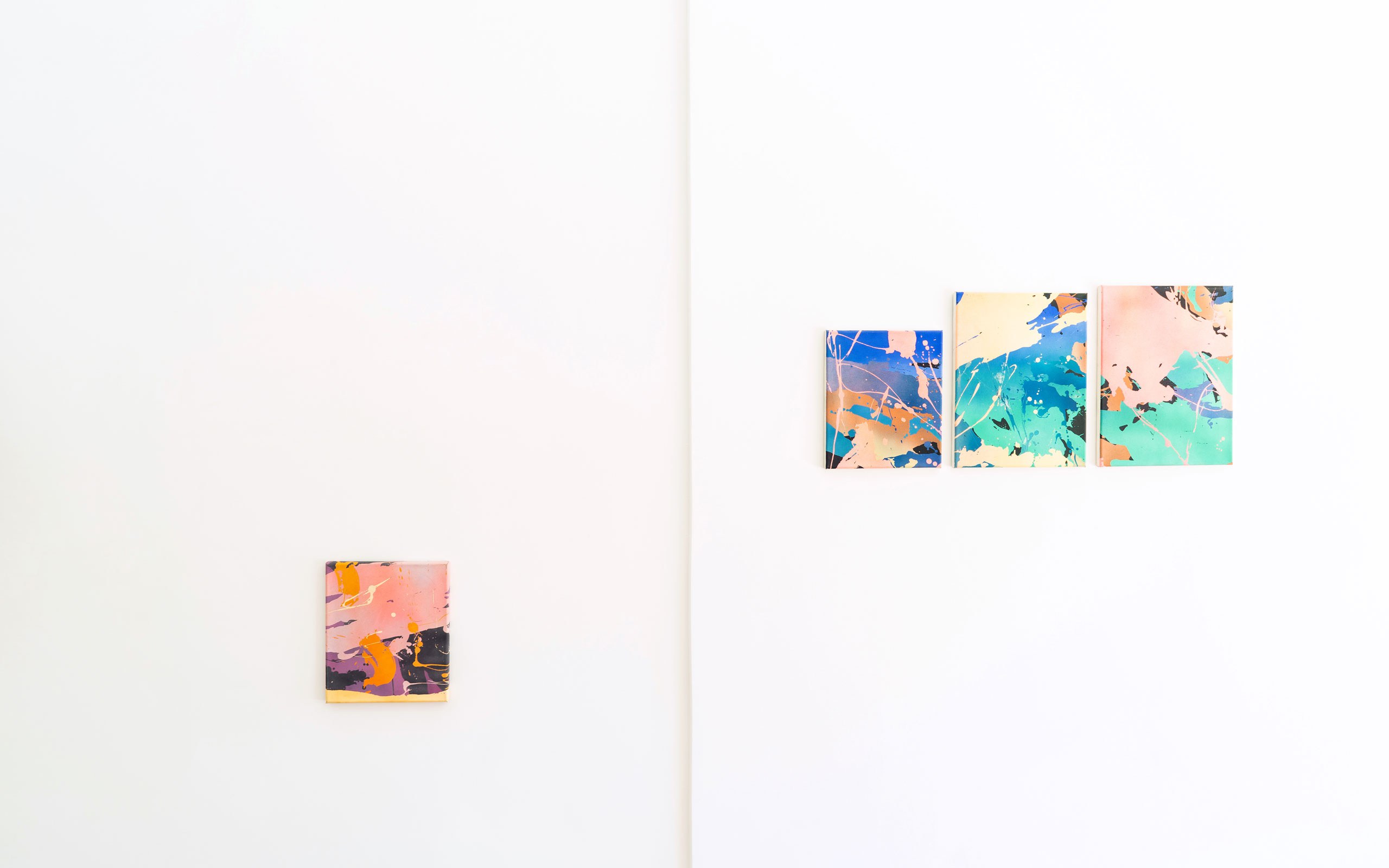
Hyper hyper, Installation View, Callirrhoe Athens, 2022, Group show, Photo: Alexandra Masmanidi
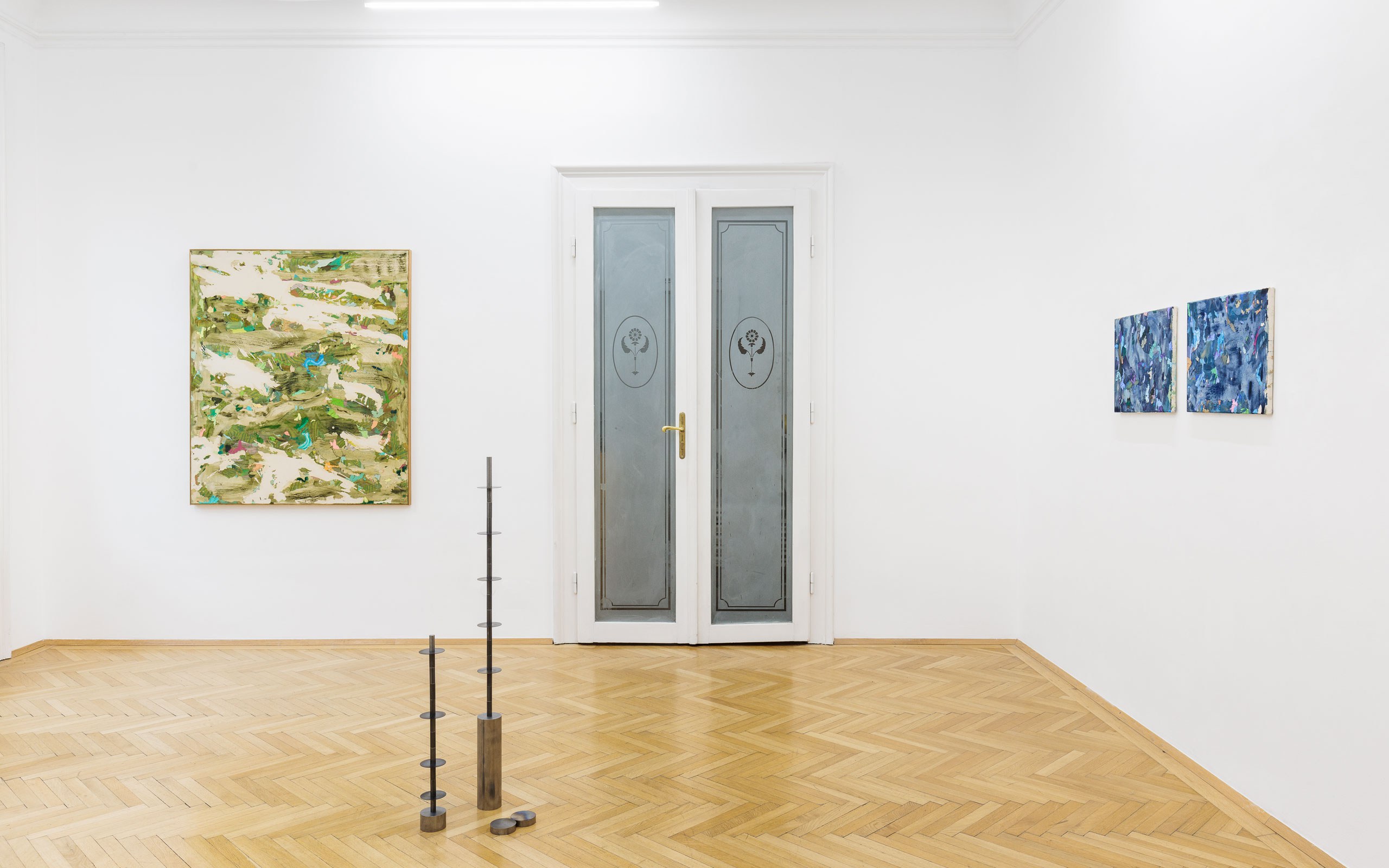
Touch Me Don't Touch Me, Installation View, Zeller Van Almsick Gallery, Vienna, 2023, Duo show with Bianca Phos, Photo by Kunstdokumentation
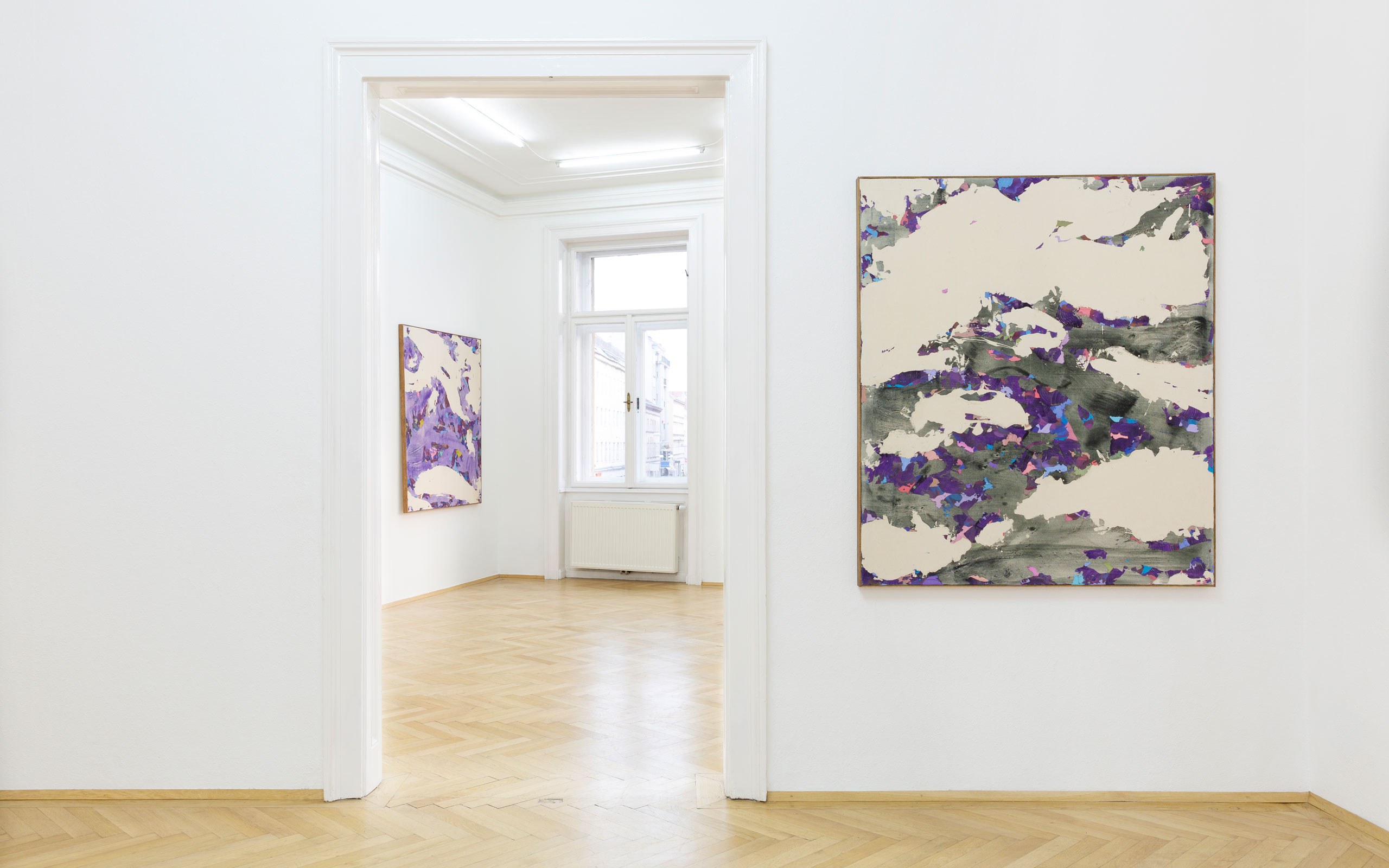
Worlds Beneath, Installation View, Nathalie Halgand Gallery, Vienna, 2018, Photo by Julian Mullan
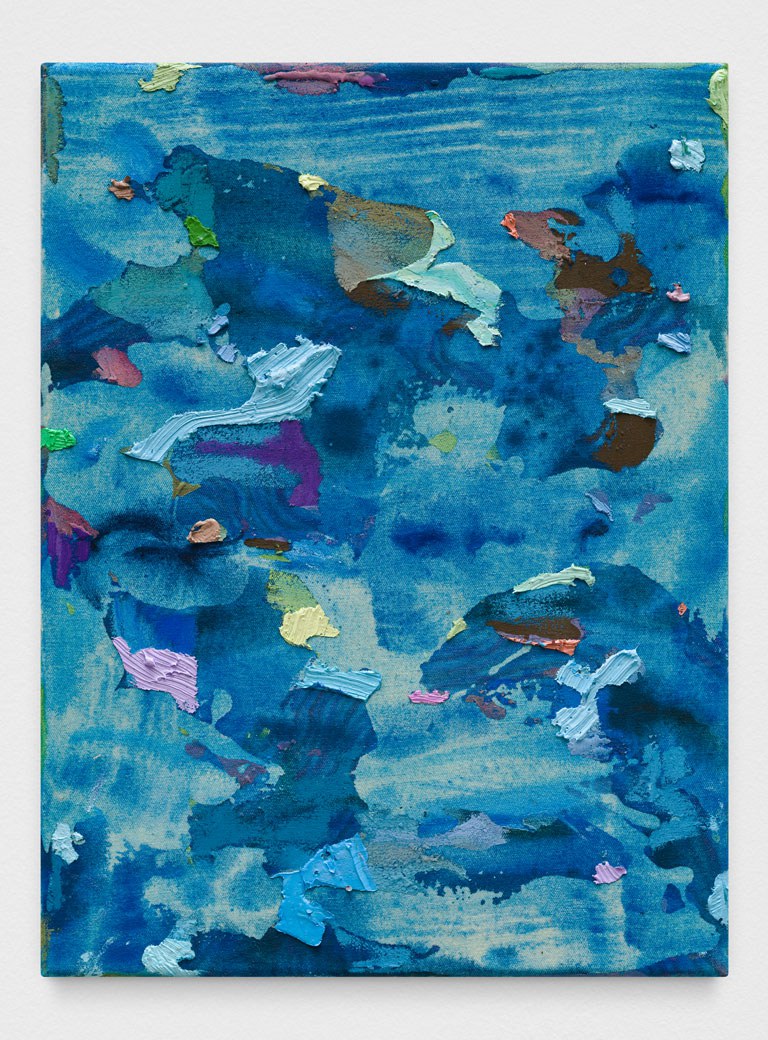
Untitled, Oil and Oilbats on unprimed canvas, 2022, Photo: Trevor Good
Interview: Kevin Hanschke
Photos: Patrick Desbrosses
Links:


